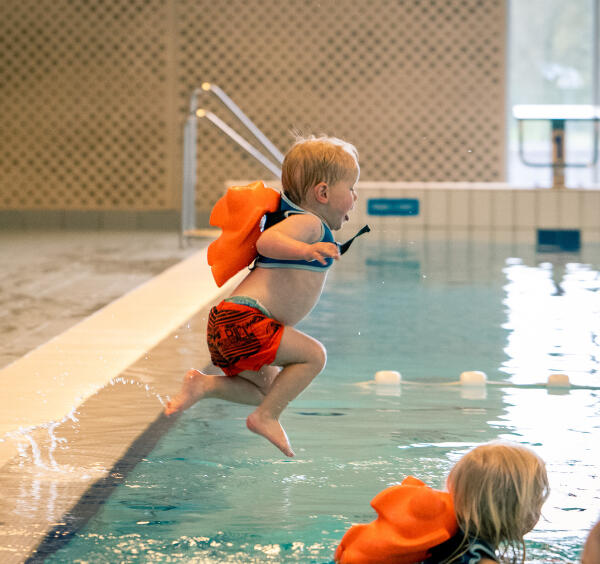1
Coach - Task 4.1 - Fibby
Coach - Task 4.1 - Fibby
Content
Children aged 2-4 usually do not have the motor skills and strength to successfully participate in the ABC swimming program. However, they face significant risks, which increase as a child becomes more attracted to water. Therefore, it is important to teach these young children water self-rescue skills. You will teach the children to:
- Not be afraid in the water,
- Be comfortable in the water,
- Move through the water,
- Not panic if they fall into the water,
- And how to get to the edge of the pool when needed.
The Fibby is an approved tool that offers significant advantages over other aids like arm floats, cork floats, and life jackets.

The Fibby allows a child to move their arms and legs freely. Without mastering swimming strokes, a child who can walk will kick and seek balance with their body and arms. Once they have mastered this, they can propel themselves with their hands and feet using, for example, a doggy paddle or something else they have invented. Initially with Fibby, and after sufficient practice, without Fibby. This makes them much safer in the water and better prepared for swimming diplomas.
At this young age, children learn primarily through imitation, experimentation, and play. Therefore, you can teach very differently from the usual swimming diploma lessons.
You can also allow parents to practice with their child using Fibby at this age. This is quality time for parents who enjoy it. It also prevents a lot of fuss because the child generally feels safer with a parent.
We will teach you:
- What you can do with Fibby,
- What games parents can play,
- What parents can demonstrate and encourage,
- How to positively guide parents and children.
Get activity badge
FibbyBuddy Get this badge
You can guide parent-child sessions and convey how a child becomes safer in the water under the guidance of an instructor.
Tasks
Task no.1
Issued by organiser or scanning QR code
Guiding young children with a Fibby to make them water-safe.
Organisers
ExpeditieRED
Badge issuer recognized with
Used in playlists
Water Activities facilitator
ExpeditieREDAwero not-for-profit organisation manages this platform and develops it together with leading educational organisations. The European Union's programme Erasmus+ granted co-funding for building the first version of this platform. Contact support@awero.org.
Platform
Change to another language:
